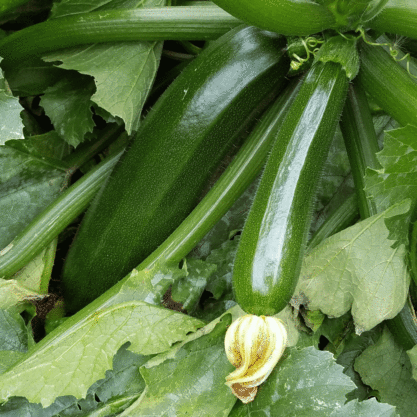
How to Grow Squash Plants
Squash has always served me well. They grow quickly and abundantly, which is great for me cause I love adding zucchini to almost anything!
Summer squash plants (like zucchini or yellow crookneck squash) are best planted in the spring and can be harvested in the summer months. Winter squash (think butternut or spaghetti squash), are best planted in the summer months and harvested in fall.
It’s easy to misconstrue winter squash as being planted in the cooler seasons. On the contrary, they prefer a lot of heat. For example, pumpkins should be planted in late June/July in order for them to be harvested for the August/September months. So if you get into the fall spirit and want to plant some pumpkins in September and carve some jack-o-lanterns by October, chances are they will take longer to grow than they would have normally or barely grow at all depending on your region.
Squash plants will sprout edible flowers and can be characterized by male or female. The flowers with just the stem are the male flowers. Flowers with the immature squash fruit are the female flowers.

Although squash are self pollinators, but if your garden doesn’t have common visitors of bees and other pollinators then most likely your squash plants will need little attention from you. If you notice that you don’t see much fruiting occurring, you will need to step in and hand pollinate.
For hand pollination, use a small paint brush or a q-tip and swab the center of the male squash and transfer the pollen into the female flower. The flowers open up fully usually in early morning.
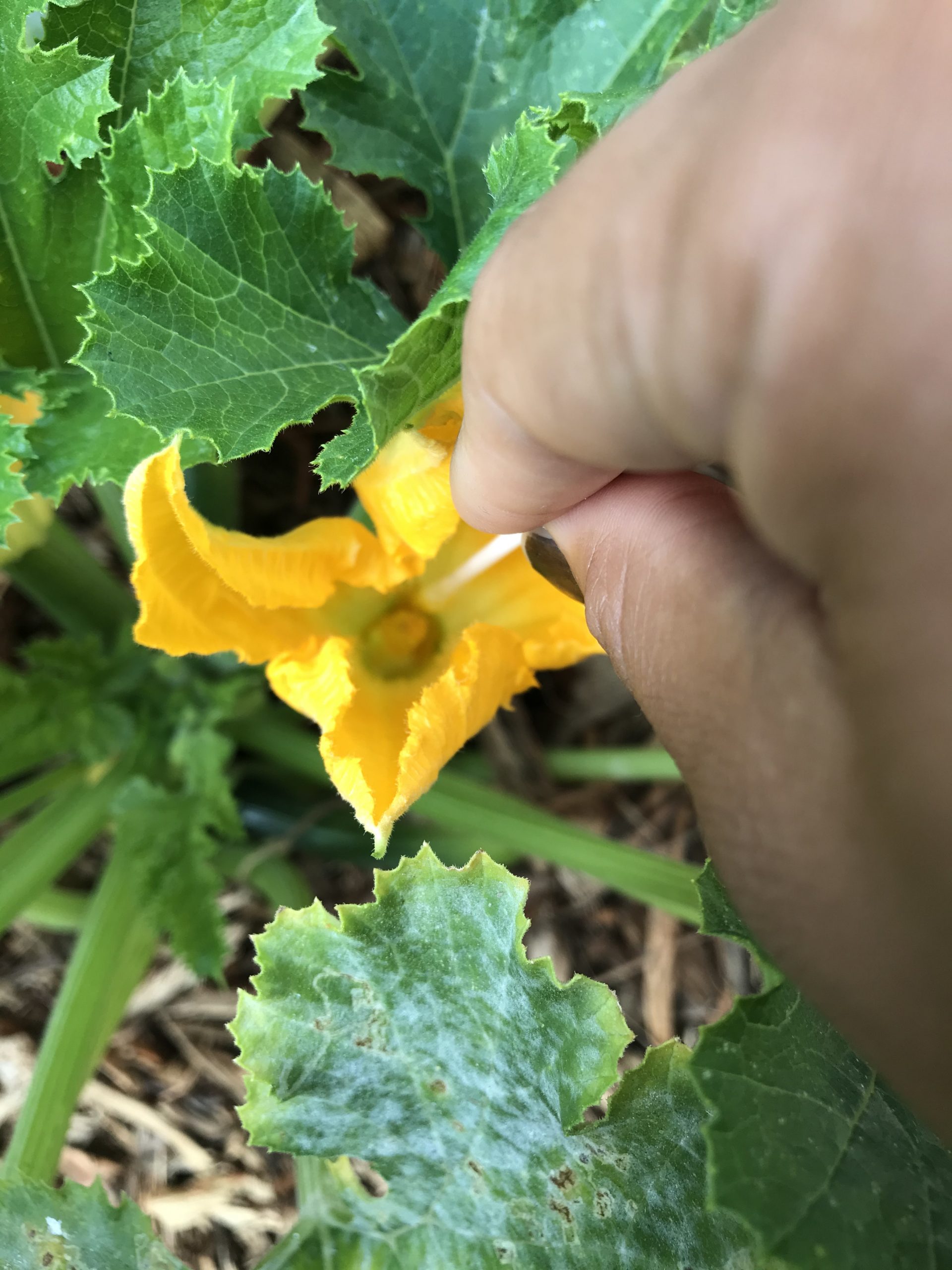
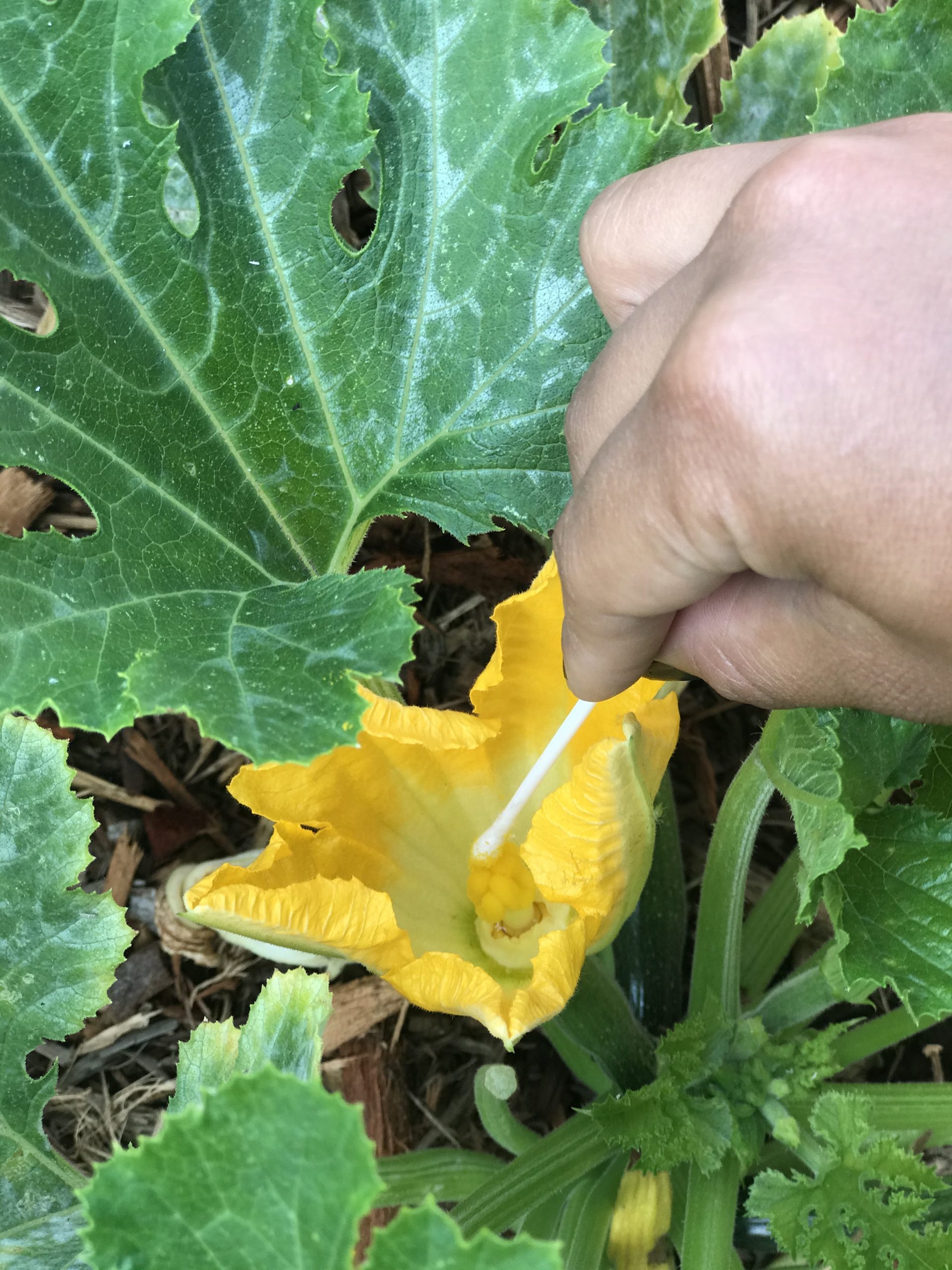
If you notice that you only see male flowers, then they probably aren’t getting fed properly. These guys are heavy feeders and need constant feeding. I fed my zucchini plants compost and they grew well. They need fertilizer that is rich in nitrogen with a balanced amount of phosphorus. If the leaves are turning yellow or a pale green, that’s usually a sign that they’re nitrogen deficient. For a quick remedy spray the leaves with fish emulsion, a nitrogen-rich fertilizer.
When the plants get big enough, prune the bottom leaves off. Too much pruning however can cause the plant to struggle, the leaves do aid in the photosynthesis process after all. But some pruning will promote plant growth and can help ward off fungal diseases, such as powdery mildew.
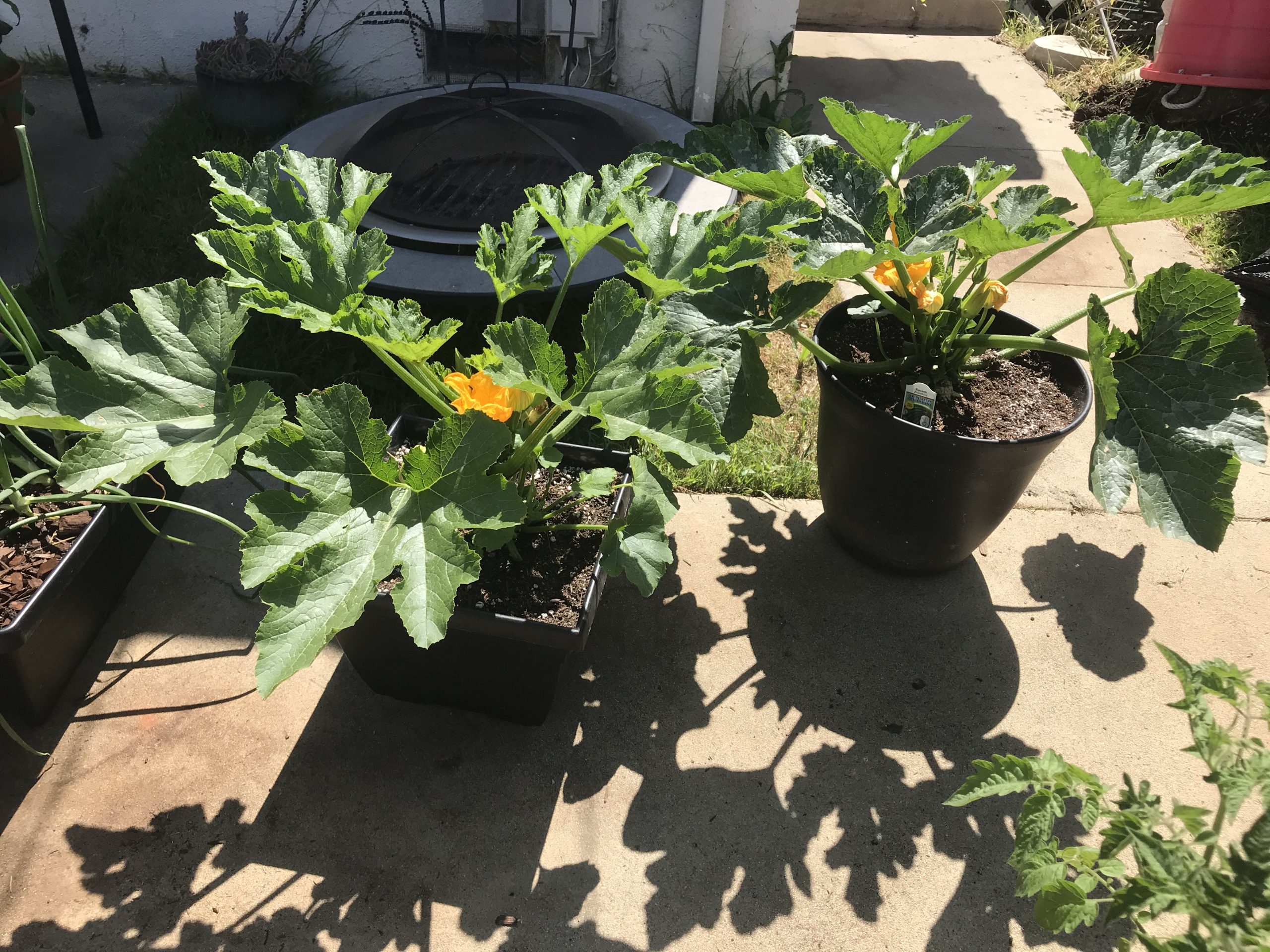
Speaking of powdery mildew, I found this video helpful as a simple DIY method on treating your Zucchini leaves without having to cut off all the parts with powdery mildew.

Leaves that have those silvery splotches might resemble the look of the dreaded fungal disease, but it means these leaves have grown to full maturity. They do not need to be cut off as long as they don’t show signs of infestation or disease.

Squash can be eaten even when dwarf sized, and it’s actually recommended you take pick those off early. Picking the fruit off when they’re 4-5″ often will promote more abundant crop yield. They’re also tastier when they are small as opposed to when they get large. And for the fuzz found on squash just give it a wash and they will get smooth.
You can let it grow until it’s the size of a baseball bat. Here is an example of an overmatured squash below. Growing them this big not only diminishes the flavor, but it also inhibits the amount of yield each plant could produce. So it is best to harvest young zucchinis to increase fruit yield.

They usually keep fruiting for all season long before they tap out in the fall. Just make sure to keep harvesting the fruits often and they will keep up with the demand. If you have mild winters, you can still sow some squash in the fall but it will take longer for the plants to mature, however.
I’ve started some Kabocha squash in mid-August and it is starting to see from fruiting, but they aren’t growing as quickly as my Zucchini did in the spring.
If you have grown some crops over the summer, have a great harvest!
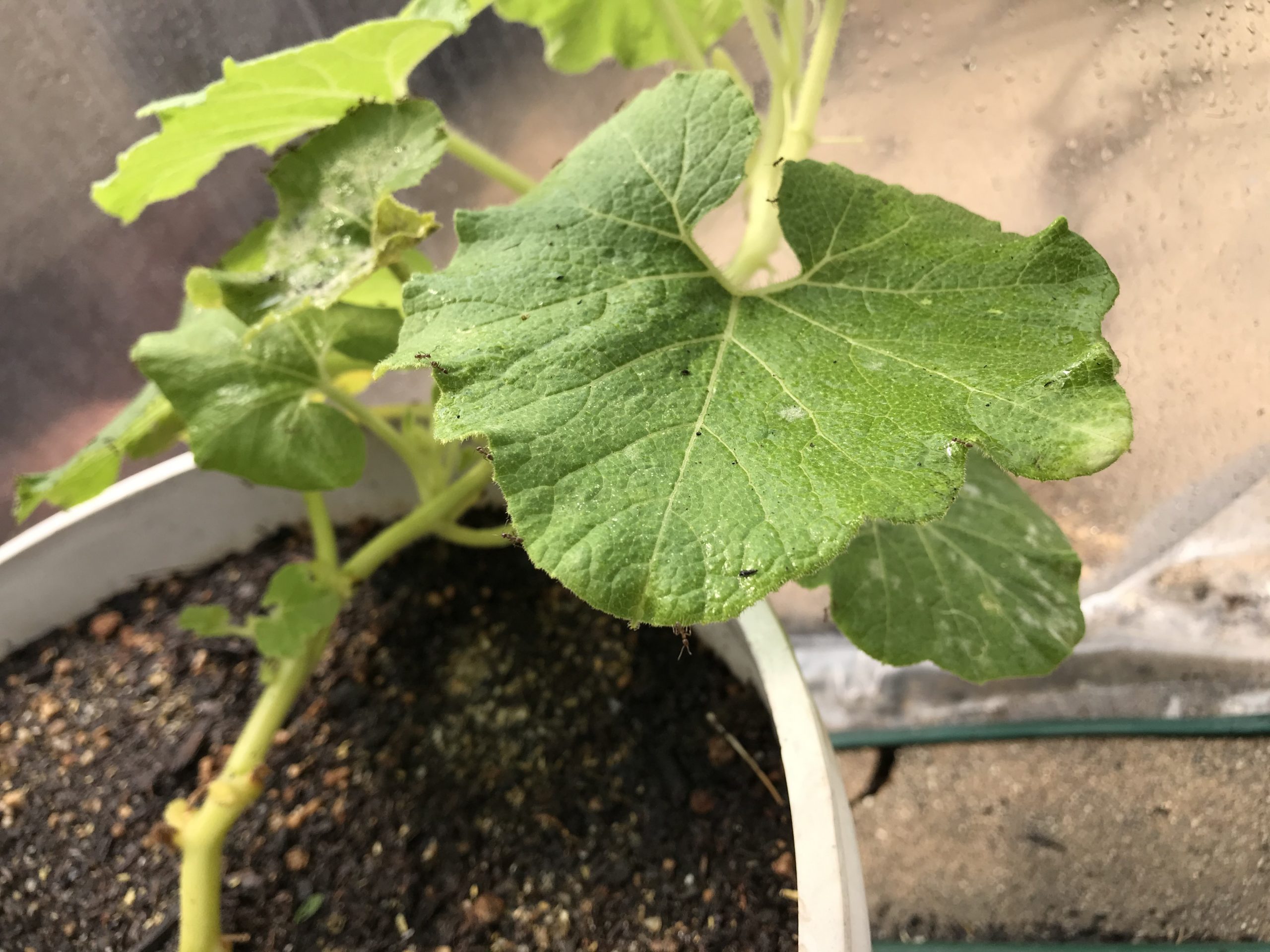


One Comment
Shamaya Jordan
Wow thanks for the tips. I love how detailed you are